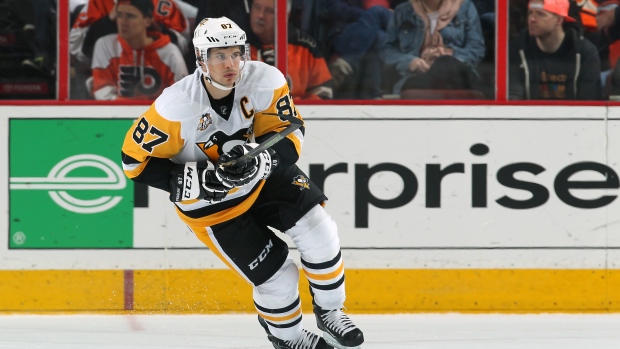Hockey Hips

If you’ve trained even a few hockey players you’ll have noticed that the hips tend to be a real problem area. This post is to outline why that is, a couple of the more common injuries they deal with in the lower extremity, and how to combat all of that in order to (get and) keep them healthy.
Hockey players tend to have:
- Really nasty adductor quality (short, dense, fibrotic)
- Limited hip internal rotation and extension
- Heavily extended lumbar spines
- Poor psoas recruitment
As a result some common injuries hockey players deal with are:
- Sports hernia cases
- Femoroacetabular impingement (FAI)
- Hip labral issues
- Extension based back issues: history of groin/lower ab, hip pain
Sports Hernia
The adductors (three muscles on your inner thigh: adductor brevis, adductor longs, adductor magnus) all come in on the pubis. There’s a little thin band of fascia called the adductor aponeurosis on the pelvis. Really tight and short adductor muscles – very common in hockey players will pull the pelvis forward. The rectus abdominus, which also originates on the crest of pubis, comes down from the top. Its job is to posteriorly tilt the pelvis (or avoid it from dumping too far forward). Basically, the rectus abdominus and the adductor longus are in a tug of war over the pelvis.

The adductors (adductor brevis, adductor longus, and adductor magnus all originate at the pubis. So does the rectus abdominus.

You end up having a recipe for disaster in hockey players: nasty, short adductors – pulling that pelvis into anterior tilt – combined with a weakened anterior core from constantly trying to keep that from happening! Ultimately one side is going to win the tug of war – one or the other goes.
FAI (Femoroacetabular Impingement)

The acetabulum is the socket. The head of the femur sits in the socket, and the socket itself is lined by the labrum. When the pelvis dumps into excessive anterior tilt it closes the space on the front of the hip. As a result bony overgrowths can develop on the actual head of the femur, on the acetabula rim, or on both. As a result at the bottom of the squat the anterior aspect of the acetabula impinges on the femur.
Labral tears are often the result of underlying FAI, where the head of the femur and the socket irritate one another long enough until the labrum goes.
Some really interesting research has shown that FAI incidences and labral tears go up each successive year in teenage hockey players.
A 2014 study in the Orthopaedic Journal of Sports Medicine concluded the following:
“Young ice hockey players show increasing alpha angles and development of asymptomatic labral tears. Stresses inherent to ice hockey likely enhance the development of a bony overgrowth on the femoral neck contributing to cam FAI. Further study into the etiology of the increase in the alpha angle in ice hockey players is recommended to determine if preventative measures may be adapted to decrease the incidence of hip symptoms which decrease activity level.”
Okay, but what causes this??
The movements hockey players are encountering are actually creating structural adaptations: bony overgrowth of the ball and the socket of the hip as outlined earlier. Structural changes to bone can occur when there’s bad stiffness in the wrong places. This is due to the repetitive nature of skating. Hockey players spend so much time in crazy anterior tilt and torquing at the hips that it’s an inevitable adaptation.
This is where a properly designed and well executed strength and conditioning program can go a long ways to keeping hockey players’ hips healthy long-term. Basically we need to re-wire the way they’re moving: tone down the areas with bad stiffness and improve the ability to create good stiffness in the right places!
- Improve glute activation
- Improve anterior core control
- Tone down adductors and hip flexors
- Get the lumbar erectors to quiet down
I’ll be back with Part 2 on specific exercises for each of these that players can incorporate into their training.
Thanks for reading!
References
